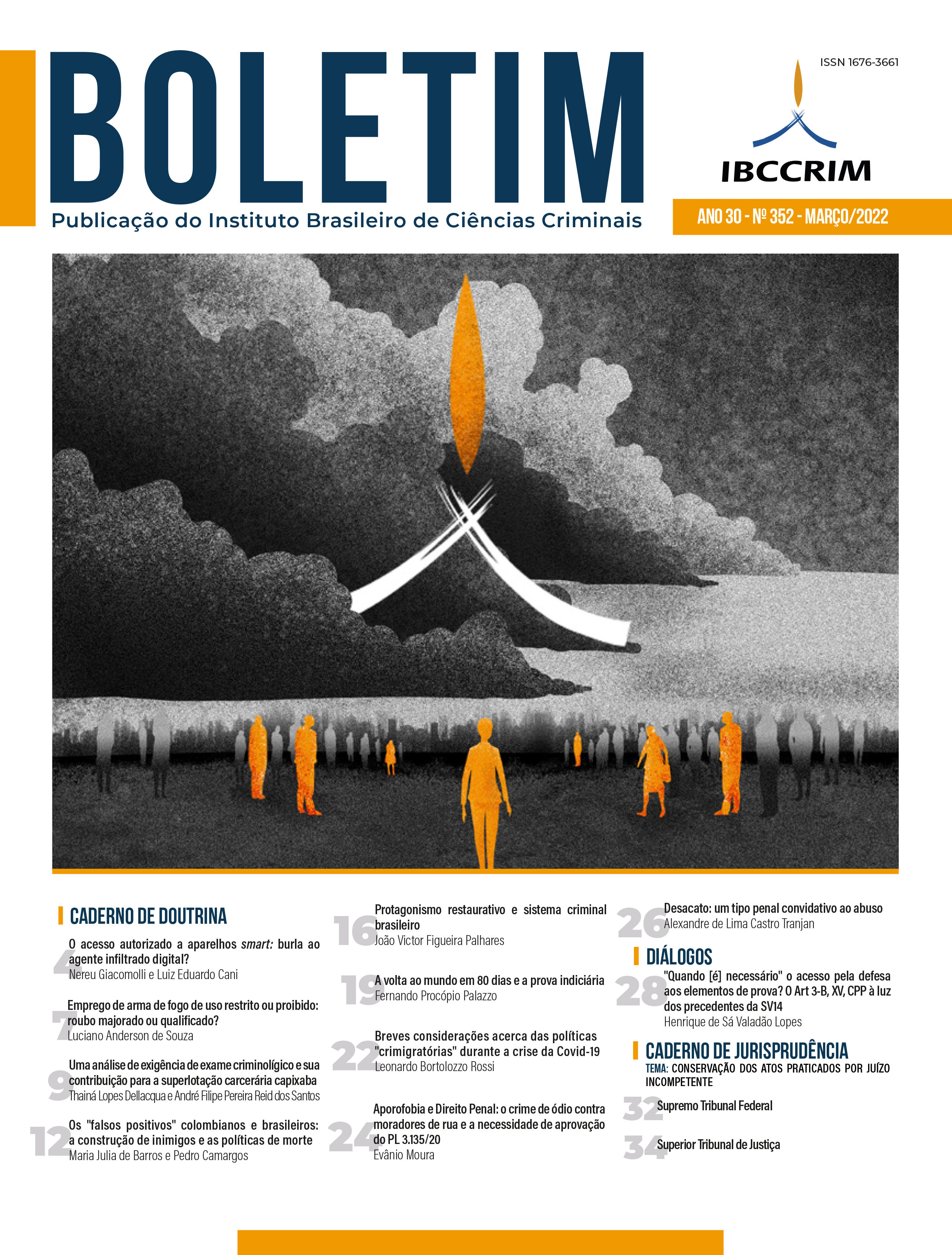The authorized access to smart devices
cheat to the digital undercover agent?
Views: 76Keywords:
Organized crime, Telephone interception, Search and seizureAbstract
In the trail of special investigation techniques, the emblematic figure of the digital undercover agent was introduced in Brazil, without, however, a minimum regulation: the manner for such infiltration was not even defined. On account of this, the resort to malware and other extremely invasive practices. At the same time, there is the growing use of access to electronic devices to obtain information – frequently, evidences produced anticipatedly in the beginning of the investigations. Some peculiarities of these two means of obtaining evidence were analyzed.
Downloads
Publication Facts
Reviewer profiles N/A
Author statements
- Academic society
- Instituto Brasileiro de Ciências Criminais
- Publisher
- IBCCRIM
References
BRASIL. Supremo Tribunal Federal (2. Turma). HC 91.867/PA, Relator: Min. Gilmar Mendes, 24 de abril de 2012. Disponível em: https://redir.stf.jus.br/paginadorpub/paginador.jsp?docTP=TP&docID=2792328. Acesso em: 23 nov. 2021.
GLOECKNER, Ricardo J.; EILBERG, Daniela Dora. Busca e apreensão de dados em telefones celulares: novos desafios frente aos avanços tecnológicos. Revista Brasileira de Ciências Criminais, v. 156, pp. 353-392, 2019.
MENDES, Carlos Hélder C. F.. Tecnoinvestigação criminal. Entre a proteção de dados e a infiltração por software. Salvador: JusPodivm, 2020.
STRECK, Lenio Luiz. Art. 5º, XII. In: CANOTILHO, J. J. Gomes; MENDES, Gilmar Ferreira; SARLET, Ingo Wolfgang; STRECK, Lenio Luiz. (Coord.). Comentários à Constituição do Brasil. São Paulo: Saraiva, 2018, p. 314.
VALENTE, Manuel. O reforço dos princípios constitucionais na obtenção de prova no mundo digital. Revista de Direito de Polícia Judiciária, ano 2, n. 3, pp. 11-25, 2018.
Downloads
Published
How to Cite
Issue
Section
License
Copyright of published articles belongs to the author, but with journal rights over the first publication and respecting the one-year exclusivity period. Authors may only use the same results in other publications by clearly indicating this journal as the medium of the original publication. If there is no such indication, it will be considered a situation of self-plagiarism.
Therefore, the reproduction, total or partial, of the articles published here is subject to the express mention of the origin of its publication in this journal, citing the volume and number of this publication. For legal purposes, the source of the original publication must be consigned, in addition to the DOI link for cross-reference (if any).


 Português (Brasil)
Português (Brasil)
 English
English
 Español (España)
Español (España)






